You know the brassica. It’s the vegetable that you used to hide under your dinner plate, or get the dog to eat at supper when your mother looks away. Brassica is broccoli, cauliflower, and cabbage. It also the turnip, rutabaga, rapeseed, canola, arugula, and radish, in all its variations.
Brassicas are wide ranging and easily crossed for specific purposes. This adaptability to our modifications makes the brassica a valuable member of the domesticated plant community. Therefore, not all brassicas are created equal.
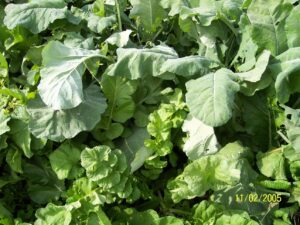
Brassicas for livestock fodder were present in Europe, as domesticated agriculture evolved to a sedentary farm system. An English system called the “Ley” developed to break disease cycles and rejuvenate the soil. If not, one had to move; see the potato famine. The Ley was seven years of grass, a winter root crop, and wheat or barley the next summer. It took time to till the ground. Brassicas did some of that work opening the soil, while providing vital winter feed. The key to this system was livestock manure. Animal husbandry and the breeding of stock grew from the necessary control of a nutrient cycling system. Expansion of agriculture was limited until the advent of nitrogen (N) fixed from ammonia, acidulated phosphorus (P) and potassium (K).
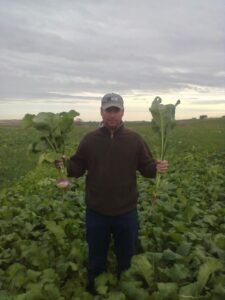
WHAT TO KNOW:
- A turnip is a brassica, and so is a radish
- A rape is a brassica. Brassicas have many names and uses
***
The English farming system emigrated with crofters and yeoman farmers to Australasia in the nineteenth century. They found warmer winters and drier summers. Turnips, kale, and swede were made to work in the existing pasture renewal and supplementary feed scenario. In fact, up until the 1940s, all Brassica plant breeding was done in England and exported. Today, English brassica breeding programs focus entirely on breeding oilseed crops. Remember, not all Brassicas are created equal.
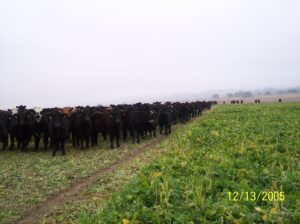
WHAT TO KNOW:
- Farming required livestock manure until 19th century
- Intensive agriculture depended on a break crop for feed and permanence
Tap rooted Brassica varieties were a better fit for the climate and intensive pastoral farming culture of N.Z. and Australia. They were easier to manage and more productive with multiple grazing opportunities in shorter growing windows. These cultivars were integral in an export pastoral farming system. This system improved the lot of millions. Grass and clover were the base. Breeding of late heading, winter active ryegrasses coincided with the Brassica breeding. The goal all along was to extend the quality of grazing, and animal performance.
Where land and input costs are high, the most direct and efficient use of photosynthetic energy is grazing. Therefore, when the quality of a pasture deteriorated it was more economical to remove it. This accomplishes two critical aspects for a sustainable pastoral system. 1.) The soil pathogen and pest cycles are broken. 2.) The introduction of supplementary forage, such as a brassica, fills the gaps in the grazing system.
WHAT TO KNOW:
- The “new” multiple grazing brassicas changed pastoral farming
- Brassicas provided cool season quality in hotter, drier climates
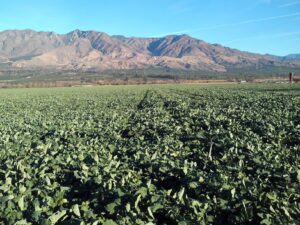
Hunter Leaf Turnip and Winfred Rape brassicas are the result of intensive research and development by PGGSeeds.
In the U.S. Hunter and Winfred brassica will extend the quality of grazing in north America. These products rejuvenate pastures and bring profitability to row crop rotations. Make your cover crop a cash crop. From distribution to reseller to farmer, PGGSeeds provides the support you need to make profitable sustainable decisions in an agricultural world demanding both.
WHAT TO KNOW:
- Research and development are based on optimum animal performance
- Crop yield does not result in a direct correlation to performance
- Extension research links animal health and performance
Hunter Leaf Turnip is a relative of the turnip. It is a cross of turnip and Chinese cabbage with dry matter production in the leaf. Regrowth of Hunter is exceptional through the fall. Three grazings are common with grazing possible as soon as 4-6 weeks after planting. As long as it can’t be pulled up by stock Hunter can be utilized. We have seen Hunter plantings grazed in 40 days in northern latitudes. There is no plant maturity restriction for Hunter grazing.
Hunter Leaf Turnip flourishes in summer moisture to provide a low cost per acre answer to summer drop off in cool season pasture. Hunter complements warm season forages such as sorghum sudangrass. Hunter, planted from May through July, at 2-3lbs an acre, with 20lbs sorghum sudangrass. Hunter is a palatable, high energy, digestible protein; this is the answer to intake in summer.
In the upper Midwest Hunter Leaf Turnip will not overwinter. As one moves south to the intermountain states Hunter has been observed surviving under snow cover. As a summer cover crop, Hunter grows the biomass needed in late crop rotations, such as wheat.
WHAT TO KNOW:
- Hunter can produce summer feed in 40 days
- With summer moisture, Hunter supplies cool season quality
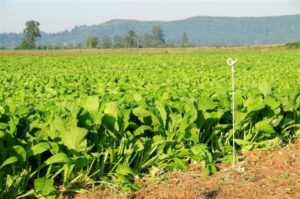
Winfred Rape is a type of forage brassica bred for adaptability to drought, through a deep taproot, and cold. Winfred is a cross of a kale and turnip. A summer planted Winfred crop will mature in 8-10 weeks. When planted in June-Jly, Winfred is best utilized as a standing stockpile feed for winter.
Winfred Rape can be planted with millet; their growth rates are similar. Plant at 2-3lbs of Winfred with 10lbs millet to the acre creating a flexible late-summer through fall-winter sequence, without the toxicity of sorghum. Winfred has survived winter in all climate zones if allowed to set a root system.
WHAT TO KNOW:
- Winfred supplies a stockpile feed for grazing in winter
- Millet and Winfred combine to allow grazing through summer
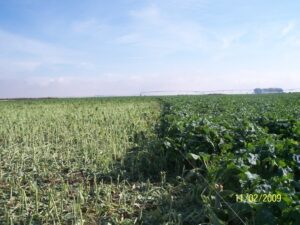
You must to look at grazing crops as you would a cash crop. An analysis of soil correction is recommended for the optimum performance of Hunter and Winfred. The taproot development is an excellent scavenger of nutrients lost below the root zone of a row crop. A good, commonsense approach to feeding the brassica crop is to evaluate the seeding after emergence. 30 units of available N are recommended if the crop is struggling. Quality of growth has as much to do with soil correction as management.
An herbicide history is wise before planting. Under certain soil profiles 2,4-D residue may persist and damage the crop. Atrazine is not good for Brassicas. Other residual preemergent herbicides have deleterious effects on production of dry matter. If your interest is to produce a high producing crop, in the season required, a thorough discussion with your Pest Control Advisor (PCA) is recommended. PGGSeeds can assist in advice.
Hunter Leaf Turnip and Winfred Rape are high in digestible dry matter. Metabolizable energy, gross energy intake minus energy loss, is the benchmark of quality grazing. This allows for efficient consumption in hot weather and sufficient caloric intake in winter. Grazing preference is as much a part of plant breeding as soil correction. It takes six hours to digest a pasture of low quality. Brassicas are digested in two hours. This means an animal needing to consume 3-4% of its bodyweight for weight gain or milk production, will more likely consume plants with high leaf matter and energy.
WHAT TO KNOW:
- Take a soil test or know the crop fertility history
- Know the herbicide history
- Consult PGGSeeds and local PCAs to get a plan for planting
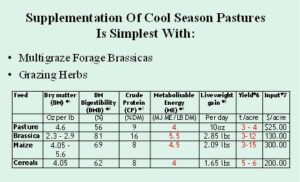
A good crop of Winfred or Hunter planted at 2-3lb an acre will produce 6,000-8,000lb’s of dry matter per acre. A 500 steer needs 20lbs of dry matter an acre. A 60-acre planting can provide 250 head 72 days grazing, managed, without regrowth. As in any feedlot or grazing system, the rumen of the animal needs adjustment to maintain proper intake. Introduction to a brassica should be monitored and gradual. To some extent the livestock will regulate themselves. A good quality hay, pasture or forage will be preferred. Intake of the brassica taking place over a two-week period can include up to 80% of the diet.
WHAT TO KNOW:
- Stock must adjust rumen for optimum intake
- Optimum intake can produce high weight gains and milk production
- Gross energy intake minus loss from methane or dung equals metabolizable enegy
Brassicas are a supplementary crop to extend the quality diet of high value stock. Brassicas may be used as a maintenance crop for breeding stock if rationed as an adjunct to proper nutritional requirements. A discussion with one’s veterinarian is recommended. PGGSeeds provides on site evaluation of the proposed use of the crop. One example, in the western irrigated sectors, is to plant brassica in hay pivots to reduce the cost of hay production and feeding. Remember, it is a system to fit the farm, and all brassicas are not created equal.
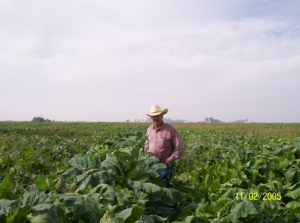
WHAT YOU GET WITH PGGSEEDS BRASSICAS:
- A highly digestible supplemental feed
- Weight gains and milk production in stress periods (summer and winter)
- Ease of sowing, low cost
- Pasture renovation
- Extension and support
Excellent! The shortest most efficient path to wealth and health is using the photosynthetic pathways of green growing plants through the rumen. SUNLIGHT IS FREE!